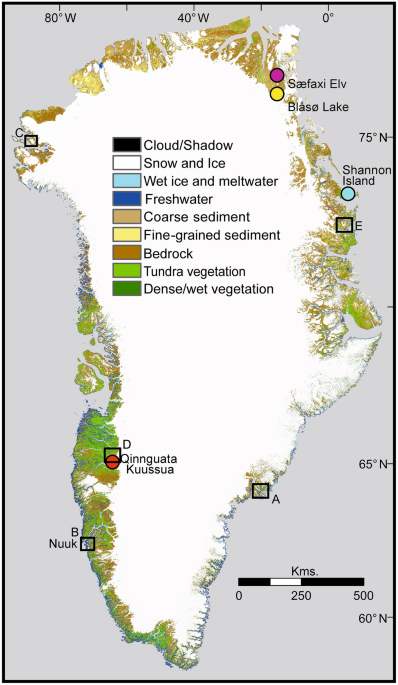The Arctic has been warming significantly faster than the global average since the 1970s, with Greenland experiencing mean annual air temperatures about 3 °C higher than the 1979–2000 average from 2007 to 2012. This warming is causing increased extremes in temperature and precipitation, leading to critical changes in Greenland’s proglacial landscapes. Key alterations include the shrinking of glaciers and ice caps, the draining of permafrost lakes, sediment transport in rivers, and increased vegetation cover due to Arctic shrubification. Understanding these climate-landscape interactions is essential for effective resource management, assessing public health impacts, and supporting economic development in the region.
The article reports on a meticulous analysis of land cover changes in Greenland between the late 1980s and the 2010s at a 30 m resolution using satellite imagery. An overall area loss of about 28,707 km² of snow and ice was identified, with much of this area transitioning to barren ground or vegetation. This change leads to significant contributions to global sea level rise and affects local ecosystems. Key findings include a 15% increase in meltwater areas and an 11% decrease in freshwater areas due to permafrost degradation. Vegetation cover expanded by 111%, particularly in areas of permafrost thaw, which has important implications for greenhouse gas emissions and local microclimates.
The study highlights a feedback loop between climate change and land cover modifications, particularly wherein temperatures exceed 6 °C, influencing both vegetation growth and permafrost conditions. A conceptual model of land cover phase changes is proposed, stressing the need for ongoing monitoring and comprehensive understanding to inform future climate projections and manage the economic implications for Greenland’s communities. The research underscores the interconnectedness of climate dynamics, landscape changes, and the associated environmental, societal, and economic impacts of Arctic climate change.
Source link


